Complexities of Thinking
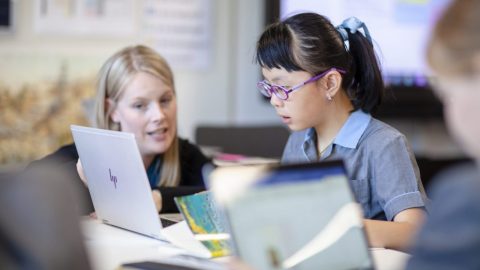
The Australian Curriculum places greater emphasis on students being able to demonstrate their ability to think at higher levels as they move through their years of schooling. This emphasis on higher levels of thinking or higher order thinking skills is very different to what was expected of students in the past. In the past, there was a need for students to be able to recall vast amounts of information such as names of explorers and the years in which they made their discoveries.
I can recall using rhymes to help me remember that in 1492 Columbus sailed the ocean blue. With easy access to the internet, students can effortlessly find this information; we do not need to carry it around in our memory for easy recall, it is all there at the touch of our fingertips.
Recalling or remembering information is still needed for some aspects of learning such as Mathematics facts or spelling; however, it is considered at the lowest level in comparison to other forms of thinking required of students today.
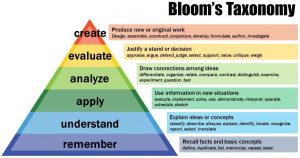
In the mid-1950s, Benjamin Bloom led a group of psychologists in developing a body of work known today as ‘Bloom’s Taxonomy’. This taxonomy sets out six domains or levels of thinking, each requiring more complex and comprehensive thinking as the levels rise from lower order to higher order thinking. It is important to note that each level builds upon the levels below. The graphic above sets out the updated version.
Bloom’s Taxonomy is one of a number of graphics depicting thinking levels, however, they all have much in common. The Australian Curriculum requires students to be able to think at higher levels to exhibit the ‘Demonstrating to Extending’ levels of its related Achievement Standards. For example, in the table below, you will see some of the descriptors for ‘Demonstrating’ at Year 4 and their respective Bloom’s Taxonomy levels.
| Subject | Demonstrating Descriptors | Bloom Level |
| English | Describe literal and implied meaning connecting ideas in different texts. | Comprehension |
|
Mathematics
|
Construct data displays from given or collected data. | Application |
| Humanities and Social Sciences | When examining information, they distinguish between facts and opinions and detect points of view. | Analysis |
| Science | Apply the observable properties of materials to explain how objects and materials can be used. | Application |
Teachers are well equipped to support and guide students in their development of thinking skills. However, these skills do not develop overnight; they take many years for mastery to be achieved, sometimes even well into adulthood. Discussions abound when guiding students towards applying higher order thinking strategies. Often, teachers will model the processes and their thinking, and provide templates to help students organise their thinking and guide them towards the goal. Teachers will do this numerous times, firstly with the teacher modelling the processes for the students, next as a whole class working together, then working in groups, and eventually students undertaking the task individually. Below are two examples for ‘Comparing’.
Year 1 Example: Compare Two Animals

Year 5 Example: Compare Earth and Mars
| Criteria for Comparison | Similarities | Differences |
| Size |
Mars is approximately half the size of Earth. Earth has a radius of 6,371km.
|
|
| Structure | They both have the same planetary structure and are both made of metal and rock. They are both classified as terrestrial planets. | |
| Atmosphere | The composition of the atmosphere on both planets contains carbon dioxide, nitrogen, argon and oxygen but in very different concentration levels. | Earth has greater atmospheric pressure than Mars. Earth is 1013 millibars while Mars is 7.5 millibars. |
| Temperature | The surface temperature of Earth is 14 degrees average while Mars is very cold with an average surface temperature of -63 degrees. |
As students progress through the year levels, the level of complexity of the thinking strategies they need to demonstrate also rise in complexity and sophistication.
Parents can help their daughters with their thinking by engaging in discussions that require them to apply some of the thinking strategies listed above. For example, what reasons do you have for thinking that? What are the differences between this game and that? Why does that happen? Give me three reasons why, and many more. The more they engage in these discussions, the more their mind opens to using these strategies. If used on a daily basis, students will become more confident in applying them and closer to achieving mastery.
Buddy Program Commences This Semester
The ‘Buddy Program’ is an important component of the relationships students build at school. These programs operate in different ways at different schools but at Barbreck we want the program to have greater significance in what it is able to achieve.
Barbreck is fortunate to have the Early Learning Centre (ELC) next door and, for our Year 4 students, this means they can have easy access to their 4-year-old ‘buddies’. The 4-year-old learners love having their buddies visit and they look up to them as their ‘big friends’ from the Junior School.
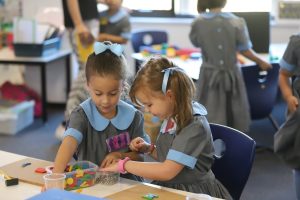
The Barbreck Buddy Program promotes inclusion and creates a culture of caring and looking out for each other.
The program strengthens in Year 5 as they work with their buddies who are now in Prep. Because of the difference in numbers between Prep and the Year 5 classes, each Year 5 class will visit on alternate weeks. The Year 5 girls in each class will be grouped to work with a group of Prep students. This way, more girls become buddies. Some of the ways the Year 5 girls might assist the Preps include listening to their buddy read, creating an eBook from their stories – with input from the Preps – or assisting with their Mathematics learning.
In Year 6, the program further develops to include before school activities such as listening to the Year 1 students read each morning or their spelling or number facts. It also extends to organising activities for the Prep and Year 1 students at lunchtime. Activities such as bubbles and skipping will be on the program.
This program will do much for the students involved. For the younger students, they will feel more confident, develop pro-social values and skills, and learn the culture of St Catherine’s. For the older girls, they will develop responsibility, empathy, role model positive behaviours, gain respect and develop their leadership skills.
For all students of Barbreck, it promotes inclusion and creates a wonderful culture of caring and looking out for each other.
Ms Karen McArdle, Head of Junior School
Year 5 Travel Expo
At the end of Term 2, the Year 5 students held a ‘Travel Expo’ to showcase their research projects. As part of their Geography unit, ‘Around the World’, the students created a detailed travel brochure for a selected country in North America or Europe. They researched the various destinations, gathered their information and then created an information report full of important facts and travel details. These budding geographers explored the characteristics that influence cultures and learnt about the hidden treasures in each of these countries. There was plenty of discussion surrounding which destination would be the best to visit.
-
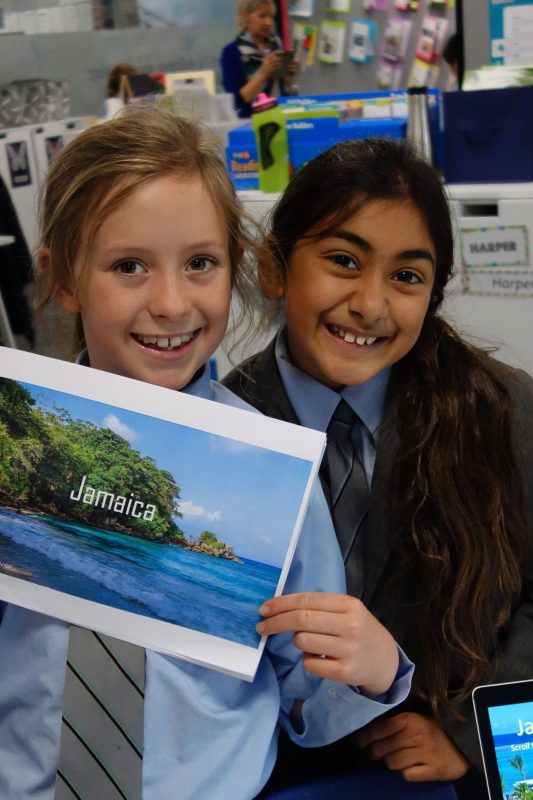
Clover Oxley and Diya Asthana present their research on Jamaica.
-
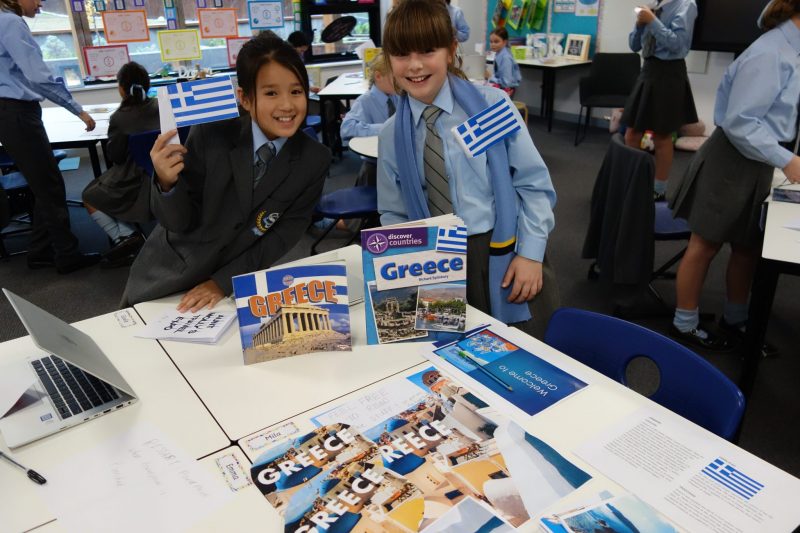
Mila Heng and Lulu Kyriakou with their travel brochure on Greece.
-
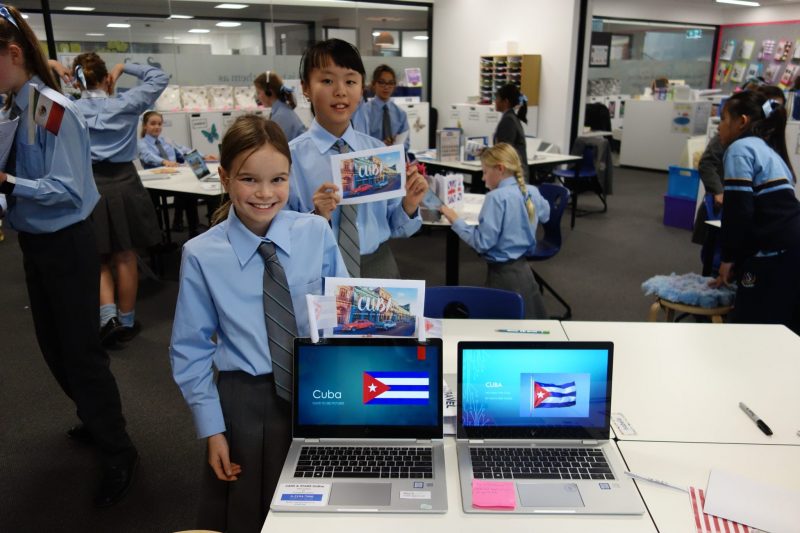
May Aiello and Anqi Cai proudly share their knowledge about Cuba.
-
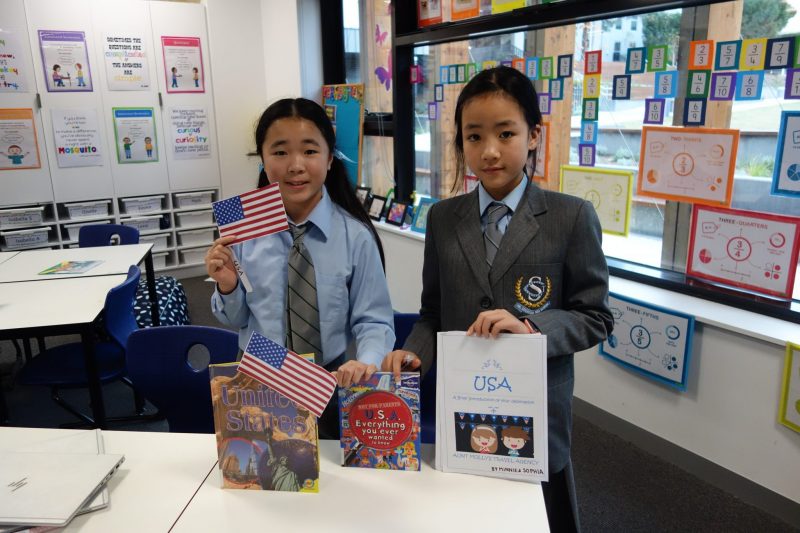
Minnie Chen and Jiaqi (Sophia) Zhang share their research on the United States.
Miss Kirrilly Wootton, Year 5 Teacher


